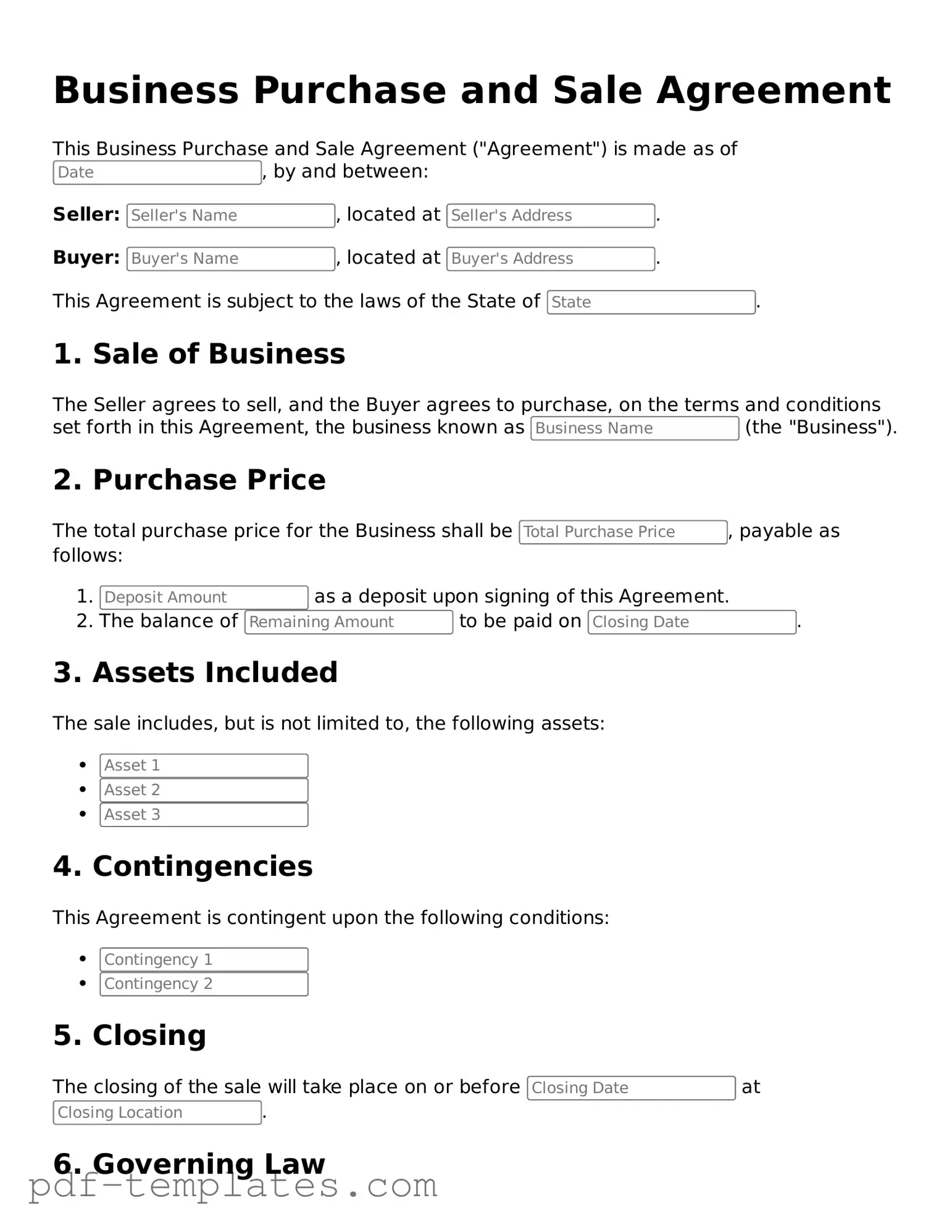The Letter of Intent (LOI) is a preliminary document that outlines the basic terms of a potential business transaction. Similar to the Business Purchase and Sale Agreement, the LOI serves as a framework for negotiations. It typically includes key points such as the purchase price, payment terms, and any contingencies that may need to be addressed. While the LOI is not legally binding, it sets the stage for more detailed discussions, much like the initial agreements in a purchase and sale context.
The Asset Purchase Agreement (APA) focuses specifically on the acquisition of a company's assets rather than its stock or ownership. This document details which assets are being purchased, the liabilities being assumed, and the purchase price. Like the Business Purchase and Sale Agreement, the APA outlines the terms and conditions of the sale, ensuring that both parties understand their rights and responsibilities throughout the transaction.
The Vehicle Release of Liability form is a vital component in the transaction of vehicle ownership, as it clearly outlines the responsibilities and liabilities of both parties involved. By using this form, sellers can protect themselves from future claims or issues that may arise after the ownership change. It is essential that both parties thoroughly understand the implications of this document, and it is advisable to access the form through reliable sources, such as https://documentonline.org/blank-vehicle-release-of-liability, to ensure all legal requirements are met and avoid potential disputes.
A Share Purchase Agreement (SPA) is similar in nature but specifically pertains to the sale of shares in a corporation. This document outlines the number of shares being sold, the price per share, and any conditions that must be met before the sale can be completed. Both the SPA and the Business Purchase and Sale Agreement require careful attention to detail and clarity to protect the interests of both buyer and seller.
The Confidentiality Agreement, often executed alongside a Business Purchase and Sale Agreement, ensures that sensitive information shared during negotiations remains protected. This document is crucial for maintaining trust between the parties. Just as the Business Purchase and Sale Agreement outlines the terms of the transaction, the Confidentiality Agreement establishes boundaries for the information exchanged, preventing misuse or disclosure to third parties.
A Due Diligence Checklist is a comprehensive document that outlines the information and documents a buyer needs to review before completing a purchase. This checklist is similar to the Business Purchase and Sale Agreement in that it helps facilitate a thorough understanding of the business being acquired. Both documents aim to ensure that the buyer is fully informed about what they are purchasing, thereby minimizing risks associated with the transaction.
The Purchase Order (PO) is a document that confirms a buyer's intent to purchase goods or services from a seller. While it is more transactional in nature, it shares similarities with the Business Purchase and Sale Agreement in that both documents formalize an agreement between parties. They specify terms such as price and delivery, ensuring that both sides have a clear understanding of their obligations.
The Partnership Agreement is relevant when two or more parties are entering into a business relationship. Similar to the Business Purchase and Sale Agreement, it outlines the terms of the partnership, including profit-sharing, responsibilities, and decision-making processes. Both documents establish a foundation for collaboration and clarify the expectations of each party involved.
The Franchise Agreement is another document that shares similarities with the Business Purchase and Sale Agreement. It outlines the terms under which a franchisee can operate a franchise, including fees, obligations, and rights. Both agreements serve to protect the interests of the parties involved while providing a clear structure for the business relationship.
The Non-Disclosure Agreement (NDA) is designed to protect confidential information exchanged during negotiations. Like the Business Purchase and Sale Agreement, it emphasizes the importance of trust and confidentiality in business dealings. Both documents are essential for ensuring that sensitive information remains secure while discussions are ongoing.
The Employment Agreement can also be related to the context of a business sale. When a business is sold, existing employees may need new agreements that outline their roles and responsibilities under new ownership. Similar to the Business Purchase and Sale Agreement, this document sets clear expectations for both the employer and employee, ensuring a smooth transition during the ownership change.
